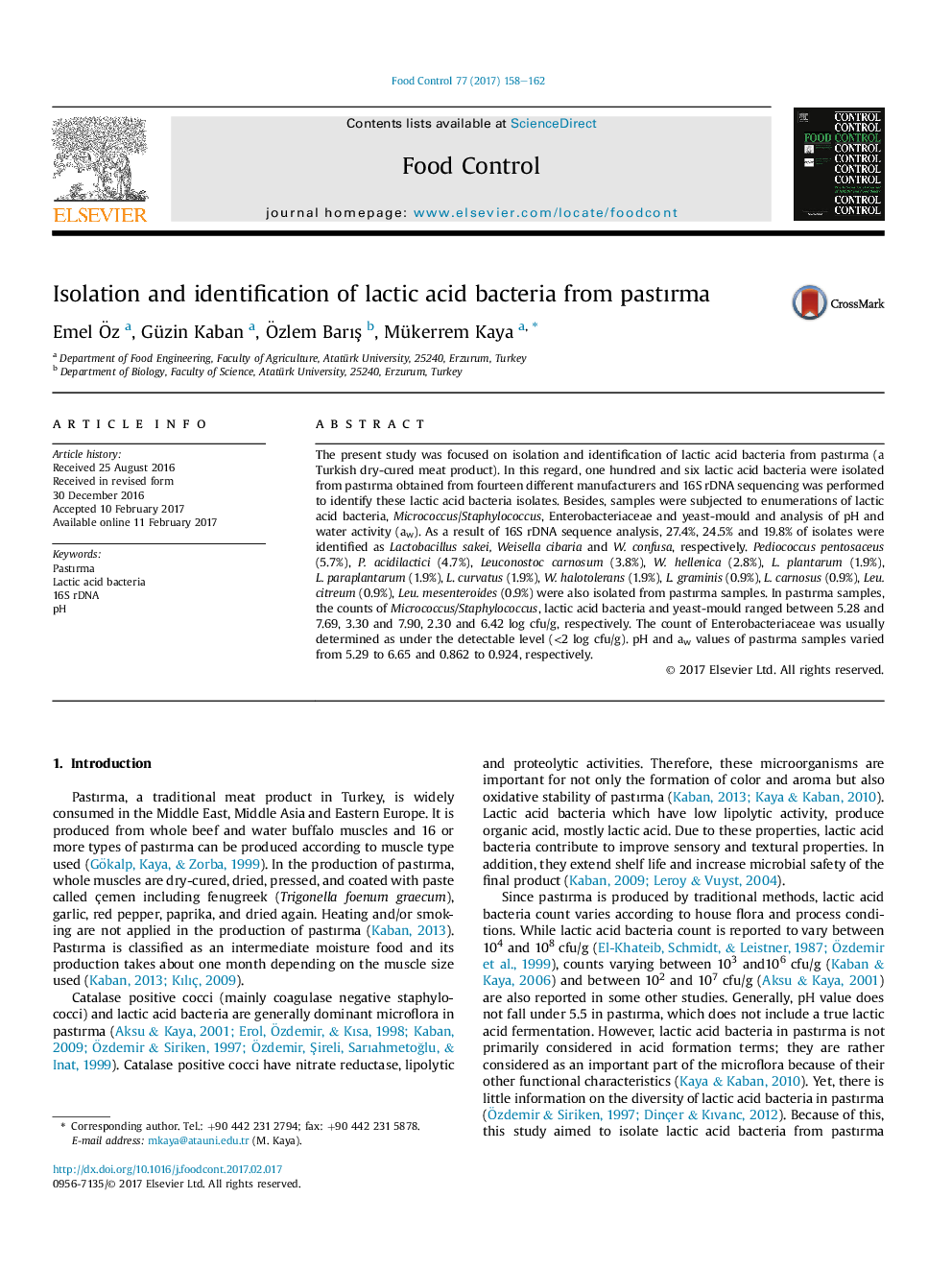| Article ID | Journal | Published Year | Pages | File Type |
|---|---|---|---|---|
| 5767565 | Food Control | 2017 | 5 Pages |
â¢Lactic acid bacteria consist of an important part of pastırma microbiota.â¢Four bacteria genus, Weissella, Lactobacillus, Pediococcus and Leuconostoc, were detected.â¢Lactobacillus sakei, the highest isolate percentage, were identified in 12 of 14 samples.
The present study was focused on isolation and identification of lactic acid bacteria from pastırma (a Turkish dry-cured meat product). In this regard, one hundred and six lactic acid bacteria were isolated from pastırma obtained from fourteen different manufacturers and 16S rDNA sequencing was performed to identify these lactic acid bacteria isolates. Besides, samples were subjected to enumerations of lactic acid bacteria, Micrococcus/Staphylococcus, Enterobacteriaceae and yeast-mould and analysis of pH and water activity (aw). As a result of 16S rDNA sequence analysis, 27.4%, 24.5% and 19.8% of isolates were identified as Lactobacillus sakei, Weisella cibaria and W. confusa, respectively. Pediococcus pentosaceus (5.7%), P. acidilactici (4.7%), Leuconostoc carnosum (3.8%), W. hellenica (2.8%), L. plantarum (1.9%), L. paraplantarum (1.9%), L. curvatus (1.9%), W. halotolerans (1.9%), L. graminis (0.9%), L. carnosus (0.9%), Leu. citreum (0.9%), Leu. mesenteroides (0.9%) were also isolated from pastırma samples. In pastırma samples, the counts of Micrococcus/Staphylococcus, lactic acid bacteria and yeast-mould ranged between 5.28 and 7.69, 3.30 and 7.90, 2.30 and 6.42 log cfu/g, respectively. The count of Enterobacteriaceae was usually determined as under the detectable level (<2 log cfu/g). pH and aw values of pastırma samples varied from 5.29 to 6.65 and 0.862 to 0.924, respectively.
